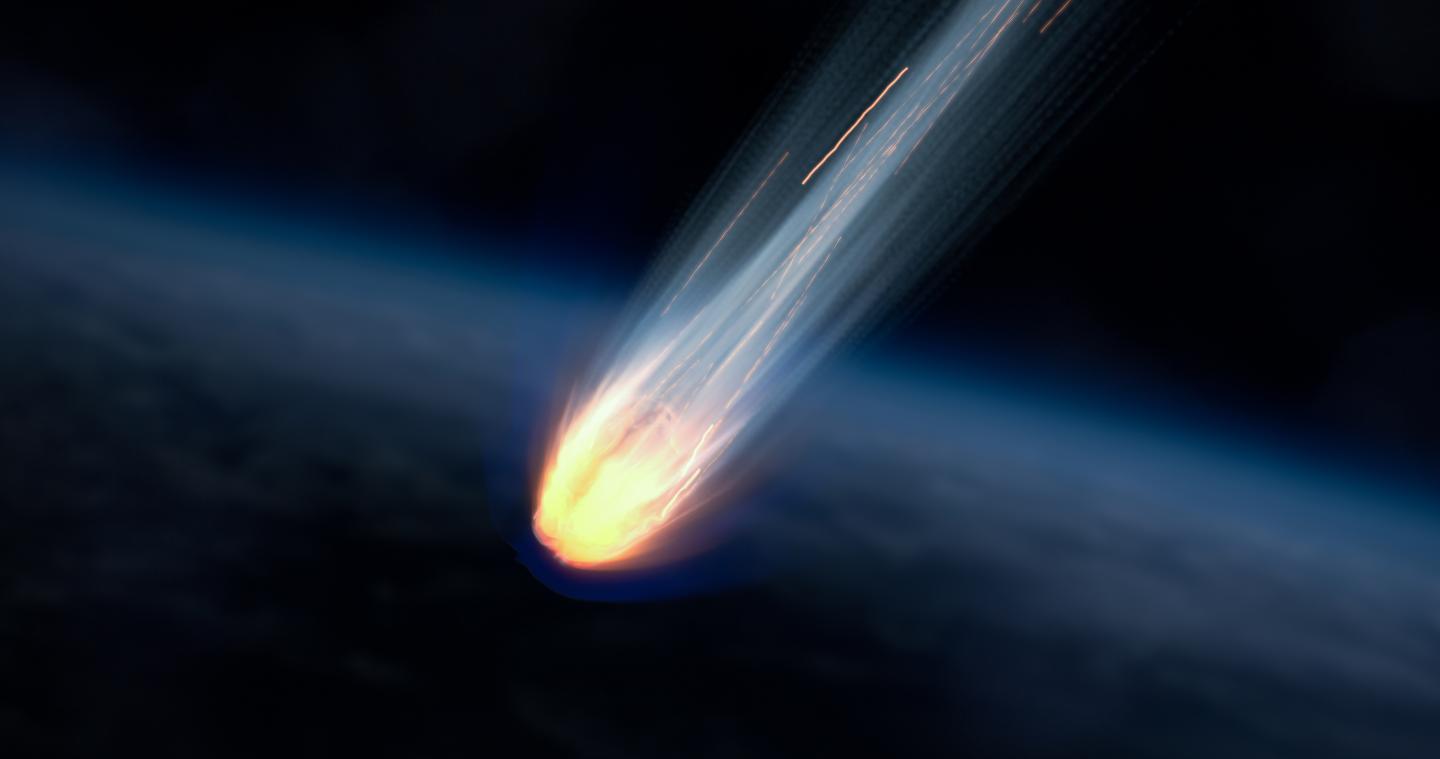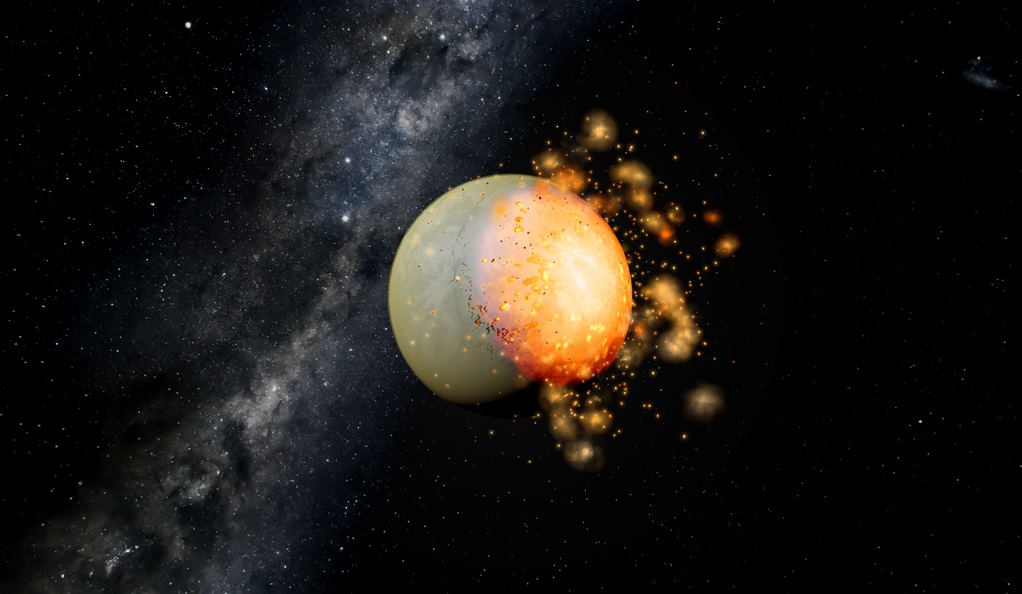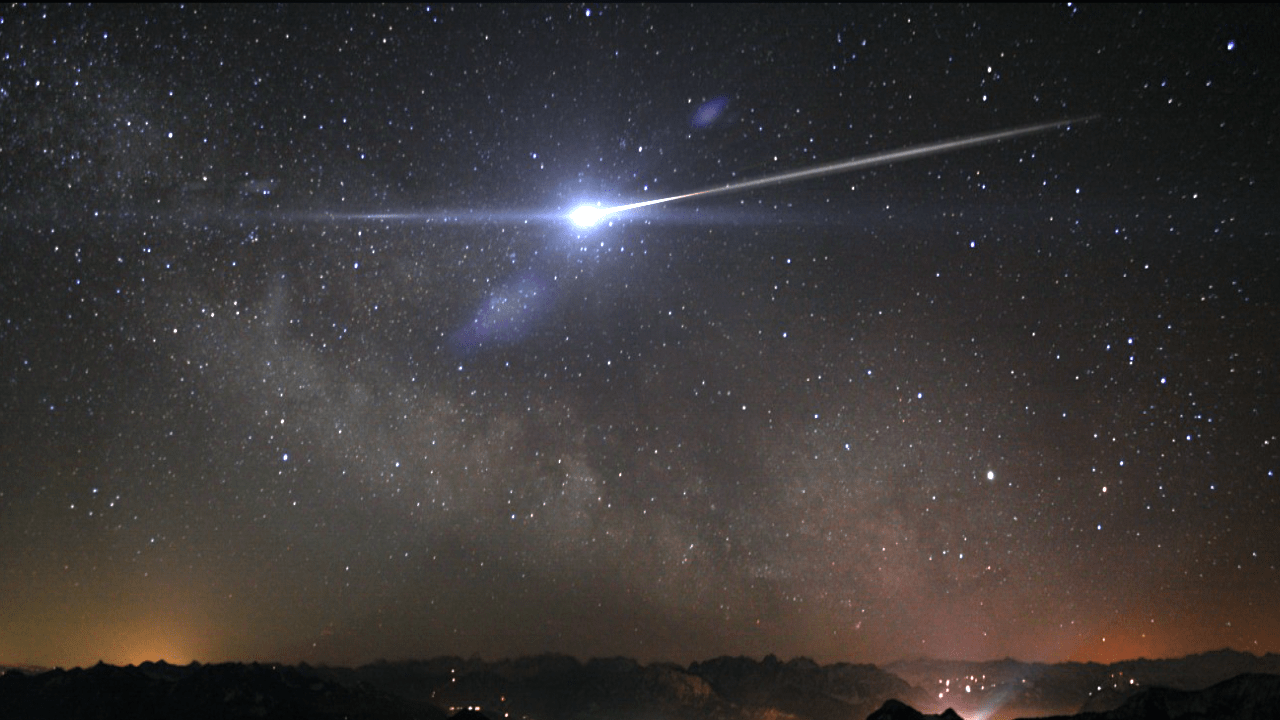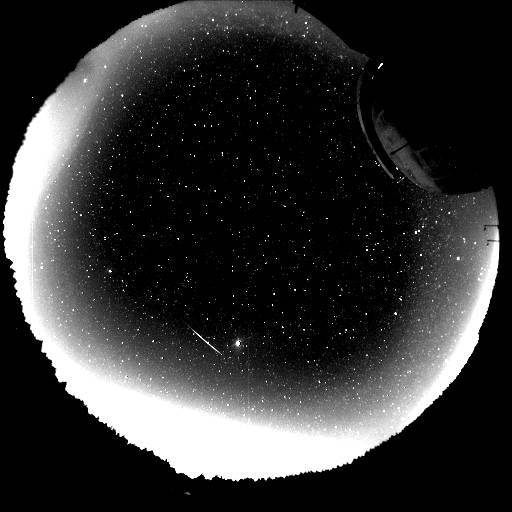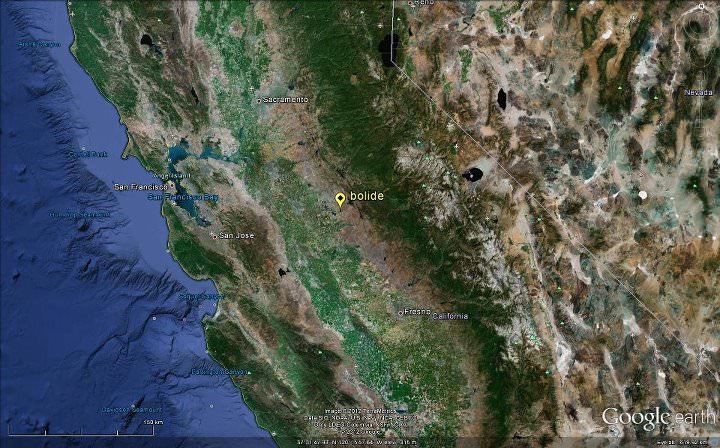A 2023 expedition to the Pacific Ocean, searching for debris from a suspected extraterrestrial object, may have been looking in the wrong place. A new look at the infrasound data used to locate the point of impact suggests that they may have been confused by the rumblings of a truck driving past.
Continue reading “The Sound of an Interstellar Meteor Might Have Just Been a Rumbling Truck”Did Powerful Asteroid Impacts Make Venus So Different From Earth?
Venus and Earth have several things in common. Both are terrestrial planets composed of silicate minerals and metals that are differentiated between a rocky mantle and crust and a metal core. Like Earth, Venus orbits within our Sun’s circumsolar habitable zone (HZ), though Venus skirts the inner edge of it. And according to a growing body of evidence, Venus has active volcanoes on its surface that contribute to atmospheric phenomena (like lightning). However, that’s where the similarities end, and some rather stark differences set in.
In addition to Venus’ hellish atmosphere, which is about 100 times as dense as Earth’s and hot enough to melt lead, Venus has a very “youthful” surface. Compared to other bodies in the Solar System (like Mercury, the Moon, and Mars), Venus’ surface retains little evidence of the many bolides impacts it experienced over billions of years. According to new research from the Southwest Research Institute (SwRI) and Yale University, this may result from bolide impacts that provided a high-energy, rejuvenating boost to the planet in its early years.
Continue reading “Did Powerful Asteroid Impacts Make Venus So Different From Earth?”Space Force is Releasing Decades of Tracking Data on a Thousand Bright Meteor Fireballs
When a meteoroid enters the Earth’s atmosphere at a very high speed it heats up. This heating up produces a streak of light and is termed a meteor. When a meteor is bright enough, about the brightness of Venus or brighter, it becomes a fireball. Sometimes these fireballs explode in the atmosphere, becoming bolides. These bolides are bright enough to be seen even during the day.
Studying bolides as they pass through the atmosphere can help model larger asteroids, something of interest to the Planetary Defense Coordination Office (PDCO) which is run by NASA. These asteroids can be deadly if they are large enough, and learning how to predict their behavior is essential to protecting our planet from a devastating impact with long-term implications for the survival of many species on Earth.
Continue reading “Space Force is Releasing Decades of Tracking Data on a Thousand Bright Meteor Fireballs”Astronomers Think a Meteor Came from Outside the Solar System
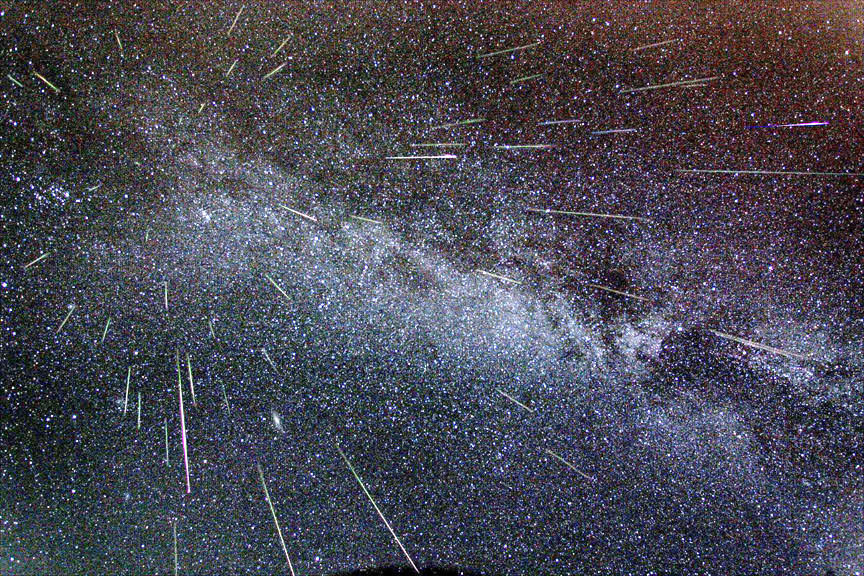
When ‘Oumuamua was first detected on October 19th, 2017, astronomers were understandably confused about the nature of this strange object. Initially thought to be an interstellar comet, it was then designated as an interstellar asteroid. But when it picked up velocity as it departed our Solar System (a very comet-like thing to do), scientists could only scratch their heads and wonder.
After much consideration, Shmuel Bialy and Professor Abraham Loeb of the Harvard-Smithsonian Center for Astrophysics (CfA) proposed that ‘Oumuamua could in fact be an artificial object (possibly an alien probe). In a more recent study, Amir Siraj and Prof. Loeb identified another (and much smaller) potential interstellar object, which they claim could be regularly colliding with Earth.
Continue reading “Astronomers Think a Meteor Came from Outside the Solar System”Satellite Watches Dust from Chelyabinsk Meteor Spread Around the Northern Hemisphere
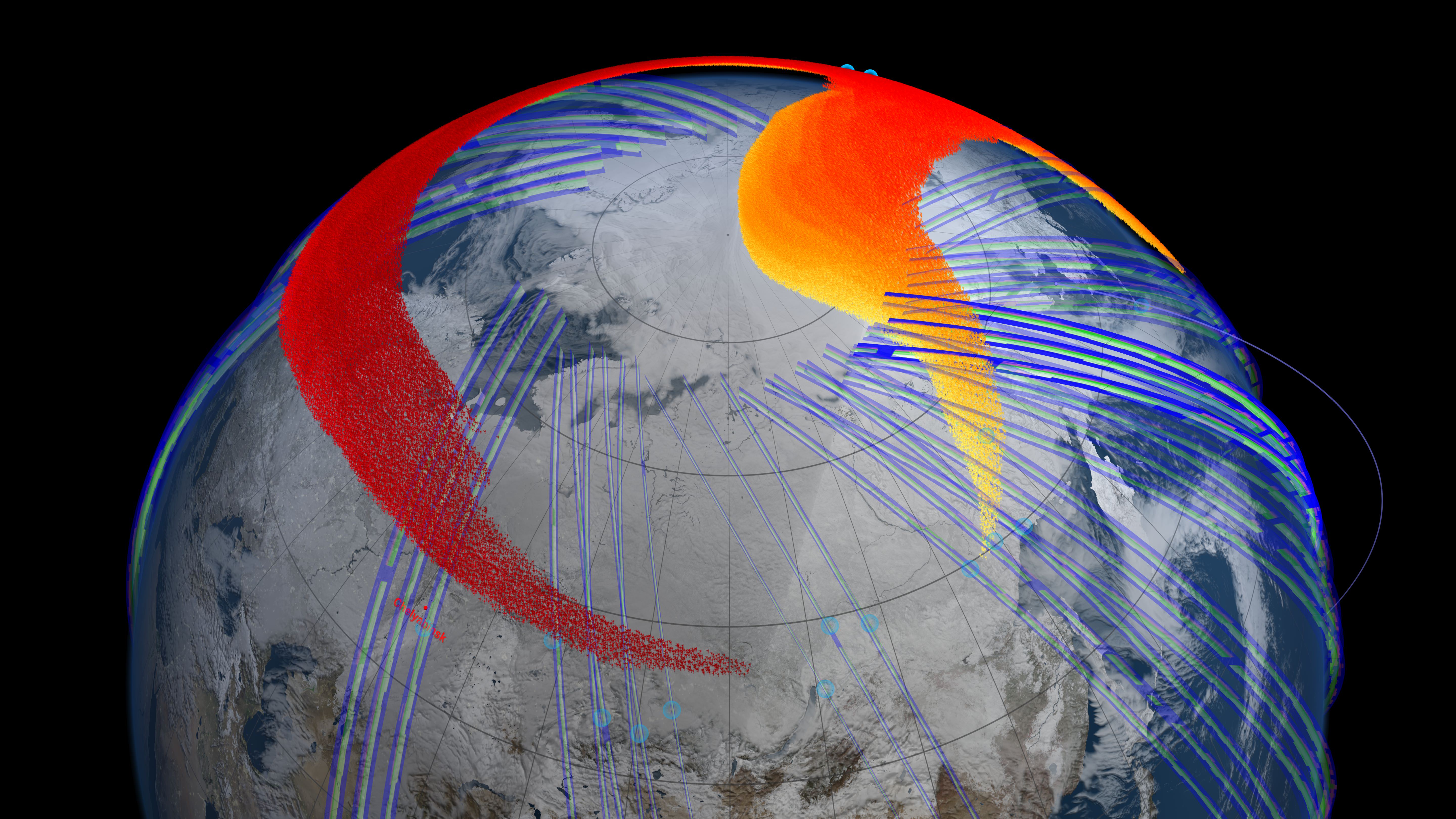
When a meteor weighing 10,000 metric tons exploded 22.5 km (14 miles) above Chelyabinsk, Russia on Feb. 15, 2013, the news of the event spread quickly around the world. But that’s not all that circulated around the world. The explosion also deposited hundreds of tons of dust in Earth’s stratosphere, and NASA’s Suomi NPP satellite was in the right place to be able to track the meteor plume for several months. What it saw was that the plume from the explosion spread out and wound its way entirely around the northern hemisphere within four days.
The bolide, measuring 59 feet (18 meters) across, slipped quietly into Earth’s atmosphere at 41,600 mph (18.6 kilometers per second). When the meteor hit the atmosphere, the air in front of it compressed quickly, heating up equally as quick so that it began to heat up the surface of the meteor. This created the tail of burning rock that was seen in the many videos that emerged of the event. Eventually, the space rock exploded, releasing more than 30 times the energy from the atom bomb that destroyed Hiroshima. For comparison, the ground-impacting meteor that triggered mass extinctions, including the dinosaurs, measured about 10 km (6 miles) across and released about 1 billion times the energy of the atom bomb.
Atmospheric physicist Nick Gorkavyi from Goddard Space Flight Center, who works with the Suomi satellite, had more than just a scientific interest in the event. His hometown is Chelyabinsk.
“We wanted to know if our satellite could detect the meteor dust,” said Gorkavyi, who led the study, which has been accepted for publication in the journal Geophysical Research Letters. “Indeed, we saw the formation of a new dust belt in Earth’s stratosphere, and achieved the first space-based observation of the long-term evolution of a bolide plume.”
The team said they have now made unprecedented measurements of how the dust from the meteor explosion formed a thin but cohesive and persistent stratospheric dust belt.
About 3.5 hours after the initial explosion, the Ozone Mapping Profiling Suite instrument’s Limb Profiler on the NASA-NOAA Suomi National Polar-orbiting Partnership satellite detected the plume high in the atmosphere at an altitude of about 40 km (25 miles), quickly moving east at about 300 km/h (190 mph).
The day after the explosion, the satellite detected the plume continuing its eastward flow in the jet and reaching the Aleutian Islands. Larger, heavier particles began to lose altitude and speed, while their smaller, lighter counterparts stayed aloft and retained speed – consistent with wind speed variations at the different altitudes.
By Feb. 19, four days after the explosion, the faster, higher portion of the plume had snaked its way entirely around the Northern Hemisphere and back to Chelyabinsk. But the plume’s evolution continued: At least three months later, a detectable belt of bolide dust persisted around the planet.
Gorkavyi and colleagues combined a series of satellite measurements with atmospheric models to simulate how the plume from the bolide explosion evolved as the stratospheric jet stream carried it around the Northern Hemisphere.
“Thirty years ago, we could only state that the plume was embedded in the stratospheric jet stream,” said Paul Newman, chief scientist for Goddard’s Atmospheric Science Lab. “Today, our models allow us to precisely trace the bolide and understand its evolution as it moves around the globe.”
NASA says the full implications of the study remain to be seen. Scientists have estimated that every day, about 30 metric tons of small material from space encounters Earth and is suspended high in the atmosphere. Now with the satellite technology that’s capable of more precisely measuring small atmospheric particles, scientists should be able to provide better estimates of how much cosmic dust enters Earth’s atmosphere and how this debris might influence stratospheric and mesospheric clouds.
It will also provide information on how common bolide events like the Chelyabinsk explosion might be, since many might occur over oceans or unpopulated areas.
“Now in the space age, with all of this technology, we can achieve a very different level of understanding of injection and evolution of meteor dust in atmosphere,” Gorkavyi said. “Of course, the Chelyabinsk bolide is much smaller than the ‘dinosaurs killer,’ and this is good: We have the unique opportunity to safely study a potentially very dangerous type of event.”
Source: NASA
Bright Meteor Rocks Argentina Rock Concert
Talk about a light show! A massive bolide was captured on video during a middle-of-the-night rock concert in Argentina on April 21, 2013. The band, Los Tekis performed at an outdoor concert venue and in perfect timing, right after the band concluded a song, the person who shot the video panned out so that the sky was visible — just as the bolide lit up the sky.
Continue reading “Bright Meteor Rocks Argentina Rock Concert”
Russian Fireball Inspires Journey into the World of Meteorites
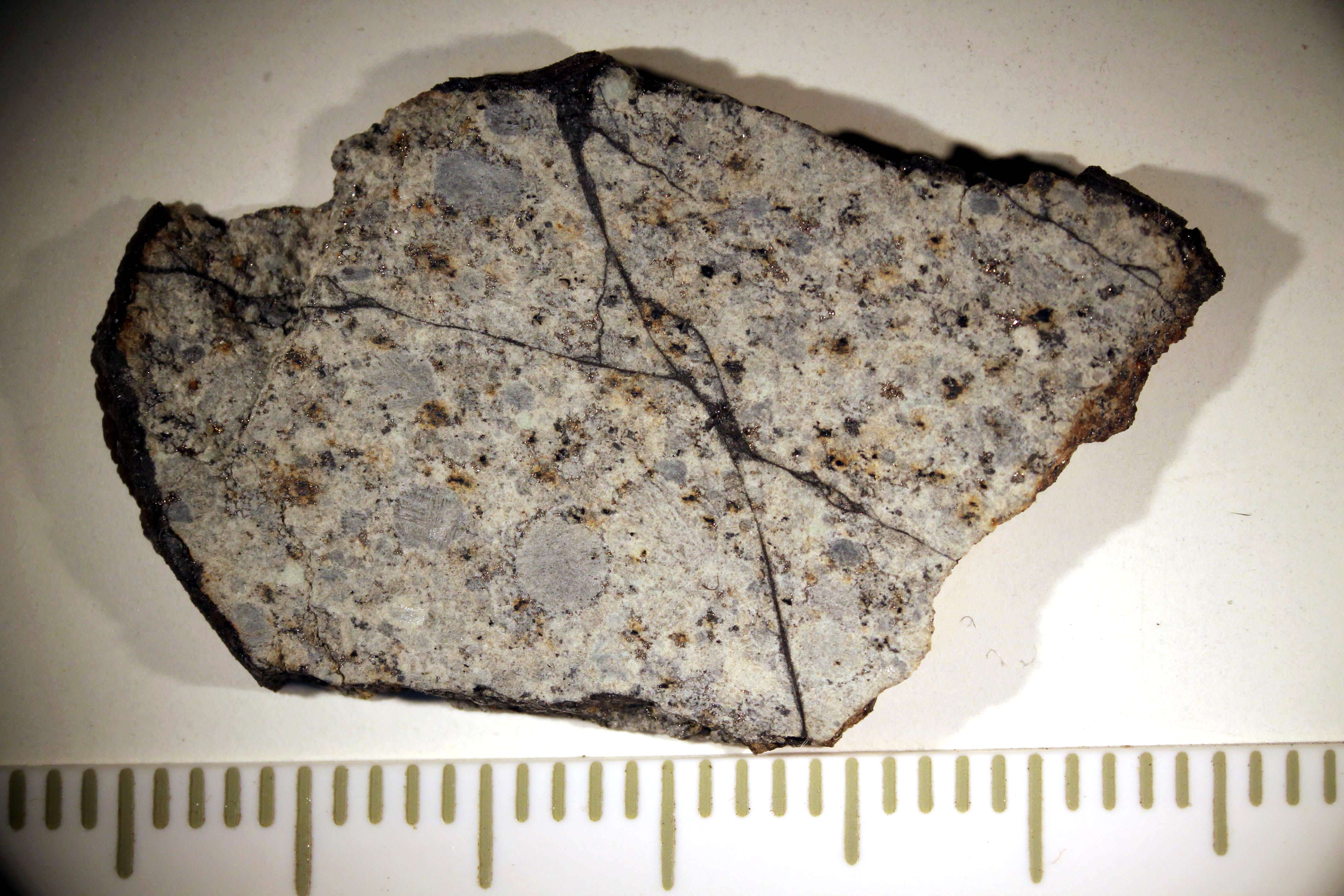
A little more than week ago a 7,000 ton, 50-foot (15-meter) wide meteoroid made an unexpected visit over Russia to become the biggest space rock to enter the atmosphere since the Tunguska impact in 1908. While scientists still debate whether it was asteroid or comet that sent a tree-flattening shockwave over the Tunguska River valley, we know exactly what fell last Friday.
Now is a fitting time to get more familiar with these extraterrestrial rocks that drop from out of nowhere.
The Russian meteoroid – the name given an asteroid fragment before it enters the atmosphere – became a brilliant meteor during its passage through the air. If a cosmic rock is big enough to withstand the searing heat and pressure of entry, fragments survive and fall to the ground as meteorites. Most of the meteors or “shooting stars” we see on a clear night are bits of rock the size of apple seeds. When they strike the upper atmosphere at tens of thousands of miles an hour, they vaporize in a flash of light. Case closed. But the one that boomed over the city of Chelyabinsk was big enough to to survive its last trip around the Sun and sprinkle the ground with meteorites.
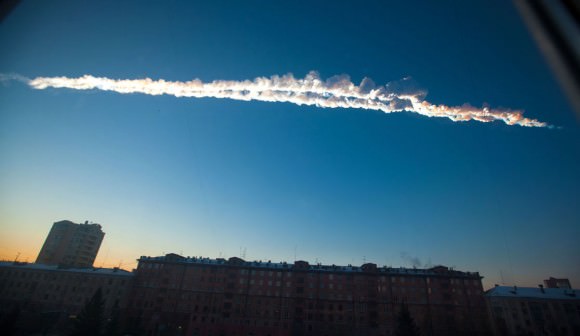
Ah, but the Russian fireball didn’t get off the hook that easy. The overwhelming air pressure at those speeds combined with re-entry temperatures around 3,000 degrees F (1,650 C) shattered the original space rock into many pieces. You can see the dual trails created by two of the larger hunks in the photo above.
Scientists at Urals Federal University in Yekaterinburg examined 53 small meteorite fragments deposited around a hole in ice-covered Chebarkul Lake 48 miles (77 km) west of Chelyabinsk the following day. Chemical analysis revealed the stones contained 10% iron-nickel metal along with other minerals commonly found in stony meteorites. Since then, hundreds of fragments have been dug out of the snow by people in surrounding villages. As specimens continue to be recovered and analyzed, here’s an overview — and a look at what we know — of these space rocks that pay us a visit from time to time.
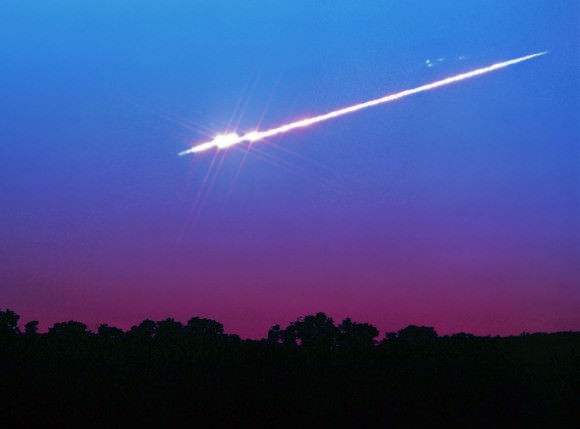
How many times has a meteor taken your breath away? A brilliant fireball streaking across the night sky ranks among the most memorable astronomical sights most of us will ever see. Like objects in your side view mirror, meteors appear closer than they really are. And it’s all the more true when they’re exceptionally bright. Studies show however that meteors burn up at least 50 miles (80 km) overhead. If big enough to remain intact and land on the ground, the fragments go completely dark 5-12 miles (8-19 km) high during the “dark flight” phase. A meteor passing overhead would be at the minimum distance of about 50 miles (80 km) from the observer.
Since most sightings are well off toward one direction or another, you have to add your horizontal distance to the meteor’s height to get a true distance. While some meteors are bright enough to trick us into thinking they landed just over the next hill, nearly all are many miles away. Even the Russian meteor, which put on a grand show and blasted the city of Chelyabinsk with a powerful shock wave, dropped fragments dozens of miles to the west. We lack the context to appreciate meteor distances, perhaps unconsciously comparing what we see to an aerial fireworks display.
Very cute Youtube video of Sasha Zarezina, 8, who lives in a small Siberian village, as she hunts for meteorite fragments in the snow after Friday’s meteor over Russia. Credit: Ben Solomon/New York Times
An estimated 1,000 tons (907 metric tons) to more than 10,000 tons (9,070 MT) of material from outer space lands on Earth every day delivered free of charge from the main Asteroid Belt. Crack-ups between asteroids in the distant past are nudged by Jupiter into orbits that cross that of Earth’s. Most of the stuff rains down as micrometeoroids, bits of grit so small they’re barely touched by heating as they gently waft their way to the ground. Many larger pieces – genuine meteorites – make it to Earth but are missed by human eyes because they fall in remote mountains, deserts and oceans. Since over 70% of Earth’s surface’s is water, think of all the space rocks that must sink out of sight forever.
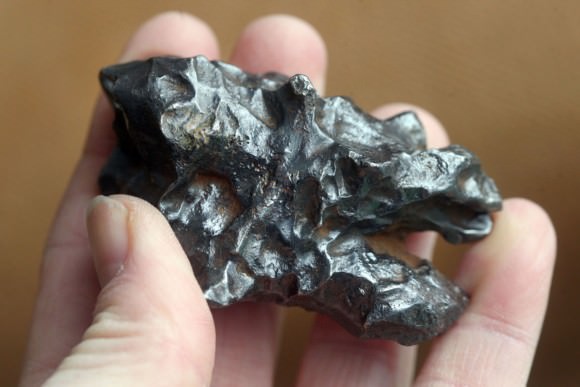
About 6-8 times a year however, a meteorite-producing fireball streaks over a populated area of the world. Using eyewitness reports of time, direction of travel along with more modern tools like video surveillance cameras and Doppler weather radar, which can ping the tracks of falling meteorites, scientists and meteorite hunters have a great many clues on where to look for space rocks.
Since most meteorites break into pieces in mid-air, the fragments are dispersed over the ground in a large oval called the strewnfield. The little pieces fall first and land at the near end of the oval; the bigger chunks travel farthest and fall at the opposite end.
When a new potential meteorite falls, scientists are eager to get a hold of pieces as soon as possible. Back in the lab, they measure short-lived elements called radionuclides created when high-energy cosmic rays in space alter elements in the rock. Once the rock lands on Earth, creation of these altered elements stops. The proportions of radionuclides tell us how long the rock traveled through space after it was ejected by impact from its mother asteroid. If a meteorite could write a journal, this would be it.
Other tests that examine the decay of radioactive elements like uranium into lead tells us the age of the meteorite. Most are 4.57 billion years old. Hold a meteorite and you’ll be whisked back to a time before the planets even existed. Imagine no Earth, no Jupiter.
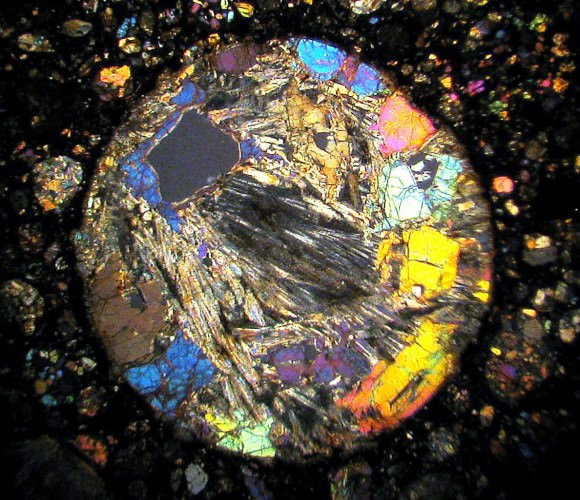
Many meteorites are jam-packed with tiny rocky spheres called chondrules. While their origin is still a topic of debate, chondrules (KON-drools) likely formed when blots of dust in the solar nebula were flash-heated by the young sun or perhaps by powerful bolts of static electricity. Sudden heating melted the motes into chondrules which quickly solidified. Later, chondrules agglomerated into larger bodies that ultimately grew into planets through mutual gravitational attraction. You can always count on gravity to get the job done. Oh, just so you know, meteorites are no more radioactive than many common Earth rocks. Both contain trace amounts of radioactive elements at trifling levels.
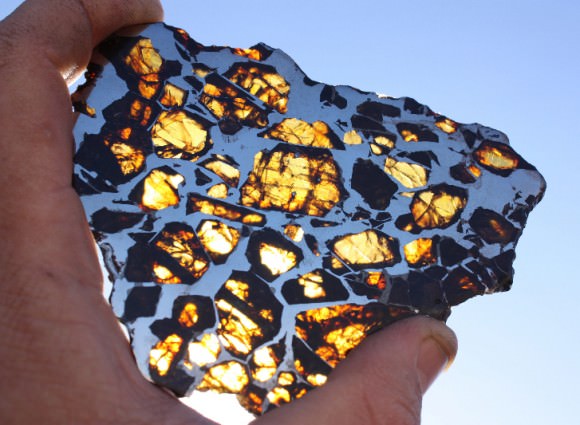
Meteorites fall into three broad categories – irons (mostly metallic iron with smaller amounts of nickel), stones (composed of rocky silicates like olivine, pyroxene and plagioclase and iron-nickel metal in form of tiny flakes) and stony-irons (a mix of iron-nickel metal and silicates). The stony-irons are broadly subdivided into mesosiderites, chunky mixes of metal and rock, and pallasites.
Pallasites are the beauty queens of the meteorite world. They contain a mix of pure olivine crystals, better known as the semi-precious gemstone peridot, in a matrix of iron-nickel metal. Sliced and polished to a gleaming finish, a pallasite wouldn’t look out of place dangling from the neck of an Oscar winner. About 95% of all found or seen-to-fall meteorites are the stony variety, 4.4% are irons and 1% stony-irons.
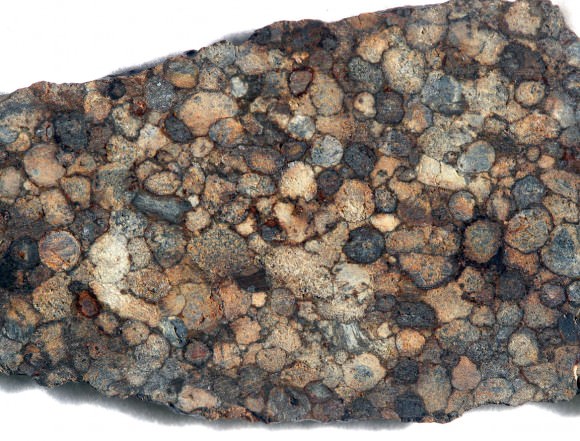
Earth’s atmosphere is no friend to space rocks. Collecting them early prevents damage by the two things most responsible for keeping us alive: water and oxygen. Unless a meteorite lands in a dry desert environment like the Sahara or the “cold desert” of Antarctica, most are easy prey to the elements. I’ve seen meteorites collected and sliced open within a week after a fall that already show brown stains from rusting nickel-iron. Antarctica is off-limits to all but professional scientists, but thanks to amateur collectors’ efforts in the Sahara Desert, Oman and other regions, thousands of meteorites including some of the rarest types, have come to light in recent years.

Hunters share their finds with museums, universities and through outreach efforts in the schools. A portion of the material is sold to other collectors to finance future expeditions, pay for plane tickets and sit down to a good meal after the hunt. Finding a meteorite of your own is hard but rewarding work. If you’d like to have a go at it, here’s a basic checklist of qualities that separate space rocks from Earth rocks:
* Attracts a magnet. Most meteorites – even stony ones – contain iron.
* Most are covered with a matt-black, slightly bumpy fusion crust that colors dark brown with age. Look for hints of rounded chondrules or tiny bits of metal sticking up through the crust.
* Aerodynamic shape from its flight through the atmosphere, but be wary of stream-eroded rocks which appear superficially similar
* Some are dimpled with small thumbprint-like depressions called regmaglypts. These form when softer materials melt and stream away during atmospheric entry. Some meteorites also display hairline-thin, melted-rock flow lines rippling across their exteriors.
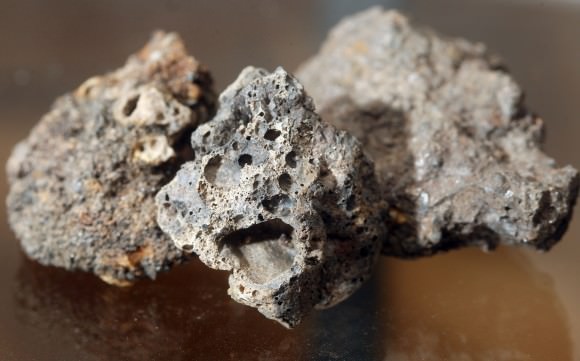
Should your rock passes the above tests, file off an edge and look inside. If the interior is pale with shining flecks of pure metal (not mineral crystals), your chances are looking better. But the only way to be certain of your find is to send off a piece to a meteorite expert or lab that does meteorite analysis. Industrial slag with its bubbly crust and dark, smooth volcanic rocks called basalts are the most commonly found meteor-wrongs. We imagine that meteorites must have bubbly crust like a cheese pizza; after all, they’ve been oven-baked by the atmosphere, right? Nope. Heating only happens in the outer millimeter or two and crusts are generally quite smooth.
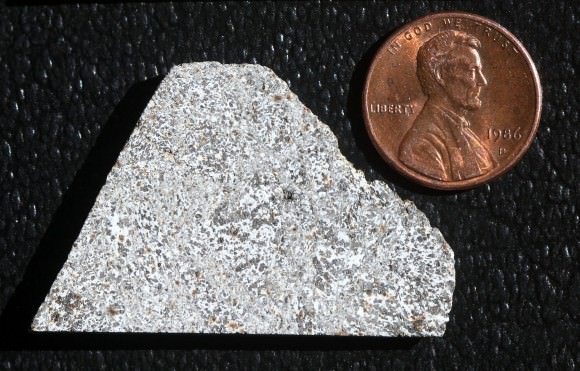
Stony meteorites are further subdivided into two broad types – chondrites, like the Russian fall, and achondrites, so-called because they lack chondrules. Achondrites are igneous rocks formed from magma deep within an asteroid’s crust and lava flows on the surface. Some eucrites (YOU-crites), the most common type of achondrite, likely originated as fragments shot into space from impacts on Vesta. Measurements by NASA’s Dawn space mission, which orbited the asteroid from July 2011 to September 2012, have found great similarities between parts of Vesta’s crust and eucrites found on Earth.
We also have meteorites from Mars and the Moon. They got here the same way the rest of them did; long-ago impacts excavated crustal rocks and sent them flying into space. Since we’ve studied moon rocks brought back by the Apollo missions and sampled Mars atmosphere with a variety of landers, we can compare minerals and gases found inside potential moon and Mars meteorites to confirm their identity.

Scientists study space rocks for clues of the Solar System’s origin and evolution. For the many of us, they provide a refreshing “big picture” perspective on our place in the Universe. I love to watch eyes light up with I pass around meteorites in my community education astronomy classes. Meteorites are one of the few ways students can “touch” outer space and feel the awesome span of time that separates the origin of the Solar System and present day life.
Recent UK Fireball Could Not Have “Skipped” Around the World, New Analysis Says
The meteoroid seen over the UK on September 21, 2012 has created quite a sensation – make that a several sensations. First, the bright object(s) in the night sky were seen across a wide area by many people, and the brightness and duration – 40 to 60 seconds reported and videoed by some observers – had some experts wondering if the slow moving light-show might have been caused by space junk. But analysis by satellite tracker Marco Langbroek revealed this was likely an Aten asteroid, asteroid which have orbits that often cross the Earth’s orbit, but their average distance from the Sun is less than 1 AU, the distance from the Earth to the Sun.
Atens are fairly unusual, making this a rather unique event. But then came another analysis that seemed to be so crazy, it might have been true: this meteoroid may have skipped like a stone in and out of Earth’s atmosphere, where it slowed enough to orbit the Earth until appearing as another meteor over Canada, just a few hours after it was seen over the UK and northern Europe.
How amazing that would have been! And there was much speculation about this possibility. But, it turns out, after more details emerged and further investigation ensued, it is not possible that the space rock could have boomeranged around the world and been seen in again 2½ hours later over Canada. However, the current thinking is that at least one or two of the largest pieces retained enough velocity that they went into an elliptical Earth orbit, and went perhaps a half an orbit around Earth.
“At first it seemed natural to consider a possible dynamical linkage (between the UK and Canadian meteors), partly because the precise location and time over Quebec/Ontario was not well-known early on,” said aerospace engineer and meteor expert Robert Matson, in an email to Universe Today. Matson worked extensively with Esko Lyytinen, a member of the Finnish Fireball Working Group of the Ursa Astronomical Association, to analyze the possible connection between the September 21 UK fireball, and the Quebec fireball that followed about 2½ hours later.
At first, the time of the fireball sighting over southeastern Canada and northeastern USA was in doubt, but two Canadian all-sky cameras from the Western Meteor Physics Group captured the meteor, providing an accurate time.
“And once I triangulated the location to a spot between Ottawa and Montreal, a linkage to the UK fireball was no longer possible due to the longitude mismatch,” Matson said.
Additionally, the 153-minute time difference between meteors places a strict limit on the maximum longitude difference for a “skipping” meteoroid of roughly 38 degrees. This would put the final perigee well off the coast of Newfoundland, south of Greenland, Matson added.
More facts emerged, putting a death knoll on the connection between the two.
“Independent of the longitude mismatch, triangulation of the Canadian videos revealed that the entry angle was quite steep over Quebec – quite at odds with what an orbiting remnant from a prior encounter would have had,” Matson said. “So the meteors are not only unrelated, their respective asteroid sources would have been in different solar orbits.”
Image of fireball taken on Feb. 25, 2004 by the Elginfield CCD camera from the University of Western Ontario.
Another duo of astronomers from the British Astronomical Association, John Mason and Nick James concurred, also noting the shallow angle of the UK fireball, in addition to its slow speed. “We get velocities of 7.8 and 8.5 km/s and a height of 62 km ascending,” they wrote in the BAA blog. “These velocities and the track orientation and position are not at all consistent with ongoing speculation that there is a connection between this fireball and a fireball seen in south-eastern Canada/north-eastern USA 155 minutes later.”
But did parts of the meteoroid survive and skip out of the atmosphere? “Nearly all of the fragments of the meteoroid did just come in for good during and shortly after the UK passage, but at least one or two of the largest pieces retained enough velocity that they went into elliptical earth orbit,” Matson said. “The perigee of that orbit was a little over 50 km above the UK. The apogee would have been half an orbit later, possibly thousands of kilometers above the South Pacific, south of New Zealand.”
Just how high the apogee altitude was depends on how much the meteoroid decelerated over the UK, Matson added.
“This is why Esko, myself and others are very interested in determining the velocity of those fragments after they passed through perigee,” he said. “Below 7.9 km/sec, and they never get back out of the atmosphere; between 7.9 and 11.2 km/sec, they go into orbit — and we believe a couple of the biggest pieces were in the lower half of this range.”
But Matson said that if any remnant or remnants of the UK fireball did “skip” out of the atmosphere, they certainly had to come back in for good somewhere on the planet. “It is even remotely possible that it happened over Quebec,” Matson said. “But the laws of orbital mechanics do not allow an aerobraked fragment of the UK meteoroid to reenter over Quebec only 2½ hours later. It would have to be more than 4 hours later to line up with Quebec.”
The most likely scenario, Matson said, is that the surviving portion(s) of the UK meteoroid came in for good less than 2½ hours later, with the only possible locations during that window being the North Atlantic, Florida, Cuba, Central America, the Pacific, New Zealand, Australia, the Indian Ocean, the Arabian Peninsula, Turkey or southern Europe. Of these, the northern hemisphere locations would be favored.
So perhaps we haven’t heard the last of this meteoroid!
As crazy as the bouncing bolide sounds, it has happened in the past, according to Kelly Beatty at Sky and Telescope, who mentioned at least one instance where a large meteoroid streaked across the sky and then returned to interplanetary space. This sighting took place over the Rocky Mountains in broad daylight on August 10, 1972, and the meteoroid came as close as 35 miles (57 km) above Earth’s surface before skipping out into space. Beatty added that its velocity was too fast to become captured and return again.
You can read more analysis of the UK fireball being an Aten asteroid by Phil Plait at Bad Astronomy
Hat tip: Luke Dones
This article was updated on 10/9/12
Fireball Over California Exploded with Force of 5 Kilotons
[/caption]
A daytime fireball over the skies of central/northern California on Sunday morning, April 22, 2012 caused a loud explosion and the event was also detected on several seismographs stations in the area. According to Bill Cooke, head of NASA’s Meteoroid Environments Office, the source of the blast was a meteoroid about the size of a minivan, weighing in at around 70 metric tons (154,300 pounds) and at the time of disintegration released energy equivalent to a 5-kiloton explosion.
For comparison, conventional bombs yield energy from less than 1 ton to 44 tons, and the approximate energy released when the Chicxulub impact caused the mass extinction 65 million years ago was estimated to be equal to 96 million megatons of TNT.
“This was a BIG event,” said Elizabeth Silber of the Meteor Group at the Western University in Ontario, Canada.
“Most meteors you see in the night’s sky are the size of tiny stones or even grains of sand and their trail lasts all of a second or two,” said Don Yeomans of NASA’s Near-Earth Object Program Office at the Jet Propulsion Laboratory in Pasadena, Calif. “Fireballs you can see relatively easily in the daytime and are many times that size – anywhere from a baseball-sized object to something as big as a minivan.”
Silber estimates the location of its explosion in the upper atmosphere above California’s Central Valley. It is not known yet if any pieces of the space rock survived to land as meteorites, but the entire object was likely vaporized before hitting the ground. However, you can bet there are people out looking. (Silber said on the Meteorobs newsgroup that based on infrasonic data the approximate source coordinates are 37.6N, 120.5W).
Descriptions of the fireball range from a “silver flash” to like a “green glittering sparkler,” and one person said their sighting of the object was followed 4-5 minutes later by a loud sonic boom.
Unfortunately, since the huge fireball occurred during the day, all of NASA’s meteor-seeking cameras were turned off, so images of the event are sparse. You can see some at news station KTVN’s website.
This type of fireball is quite rare, and visual observations of them are even more rare. “An event of this size might happen about once a year,” said Yeomans. “But most of them occur over the ocean or an uninhabited area, so getting to see one is something special.”
That the fireball occurred during the Lyrid meteor shower is probably a coincidence, most experts are saying, as meteor shower meteors are generally small bits space dust that don’t produce large fireballs. However, another large fireball also occurred on April 20 in Brazil. See more information about that bolide here.

